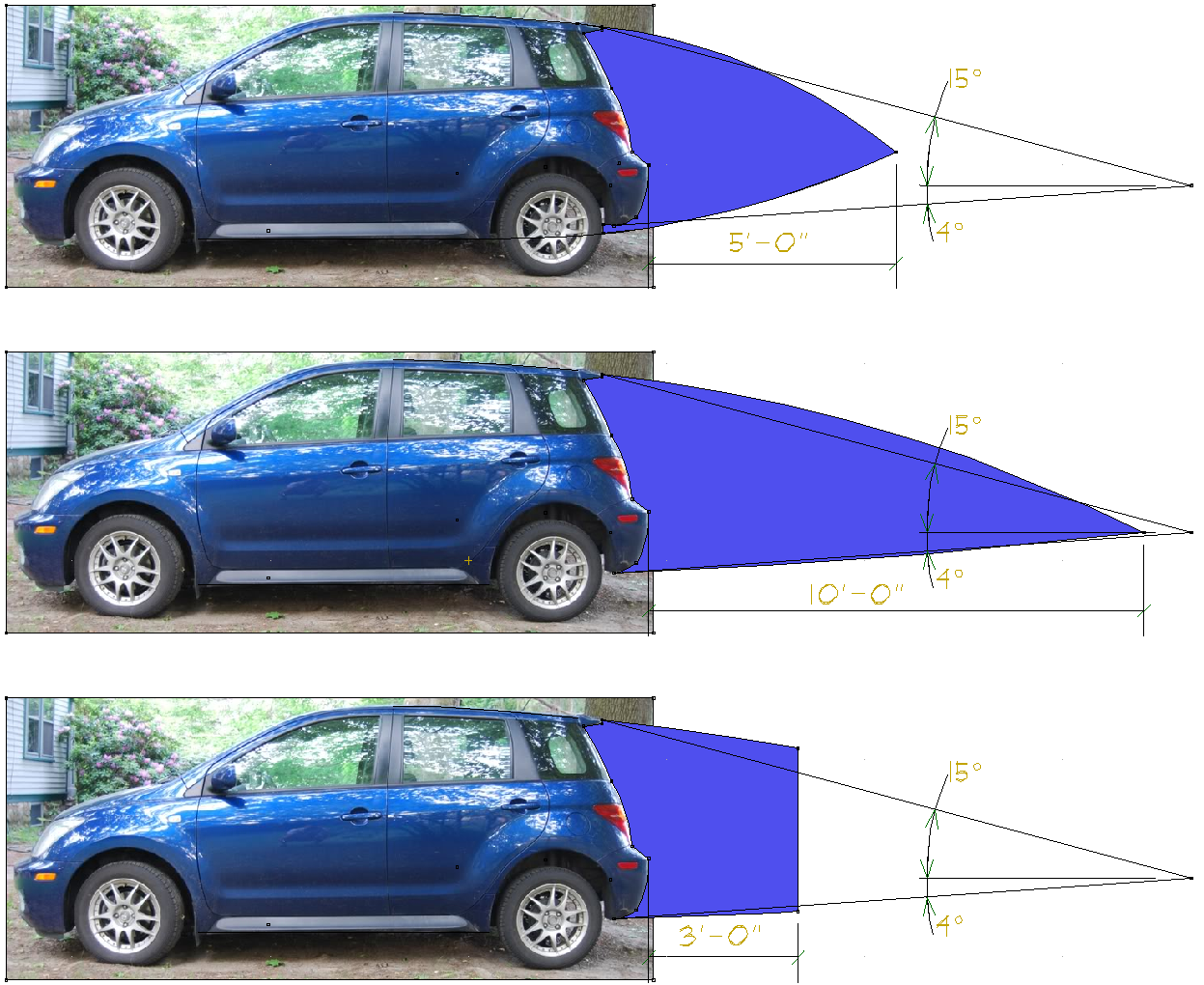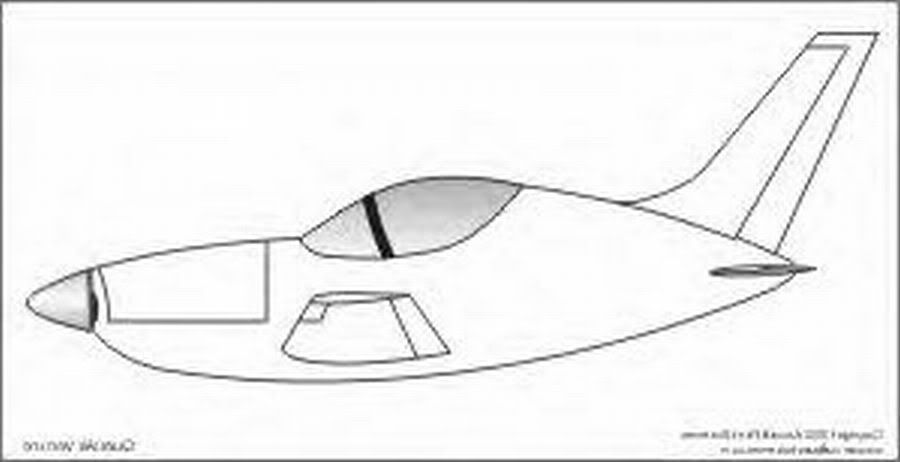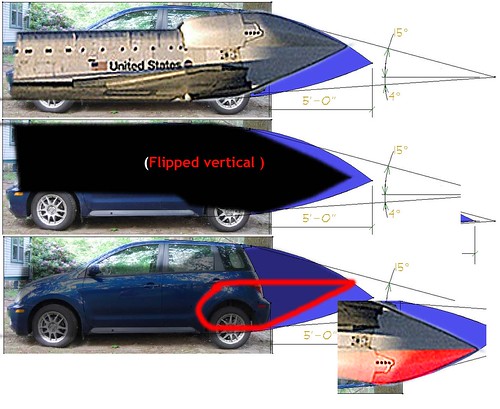 10-22-2009, 10:25 PM
10-22-2009, 10:25 PM
|
#251 (permalink)
|
|
Master EcoModder
Join Date: Dec 2008
Location: Southern WI
Posts: 829
Thanks: 101
Thanked 563 Times in 191 Posts
|
Neil,
Your second sketch above is closer to what it would take to keep the air attached.
Quote:
Originally Posted by NeilBlanchard

Hi,
The top and the bottom of my sketch are arcs, so the angle of change is constant.
|
I should mention that a constant rate of change does not necessarily guarantee to keep the air attached, if the angle from horizontal is still too steep.
Take a look at the many NACA airfoil shapes from the 64, 65, and 66 series airfoils. Those tails are quite long to their full length!! Note that the length/width ratio for these airfoils is one average at least 4:1, if not longer. That means if your car width is four feet, the total length of the car body should be at least, four times this, or 16 feet long at a minimum.
When making boat-tailed car bodies, our only practical way of handling the situation is to truncate the airfoil at some practical length, and provide what else... but a Kamm back tail piece to allow the air to detach cleanly.
Once we understand the fundamentals of airfoil design, then it becomes quite easy to determine what our limited length boat-tails should look like.
Hope this helps, Jim.
|
|
|

|
 Today Today
|
|
|
|
 Other popular topics in this forum...
Other popular topics in this forum...
|
|
|
|
 10-23-2009, 06:04 PM
10-23-2009, 06:04 PM
|
#252 (permalink)
|
|
Master EcoModder
Join Date: Dec 2008
Location: Southern WI
Posts: 829
Thanks: 101
Thanked 563 Times in 191 Posts
|
Neil,
Here are a couple of pictures that one can contemplate. Notice how long the tails are on these streamlined vehicles?
Craig Vetter streamliner

Burt Monroe Bonneville Salt Flats Streamliner

Now imagine your design similar to these, except you truncate the tail in a place you are comfortable with.
Our vehicles are slower speed types than Burt's shown above, therefore our tails can close a little more sharply, similar to Craig's above.
Quote:
Originally Posted by NeilBlanchard

... and 4 degrees or less on the bottom
|
Neil, how did you arrive at the 4° limit on the bottom?
Jim. |
|
|

|
 10-23-2009, 07:21 PM
10-23-2009, 07:21 PM
|
#253 (permalink)
|
|
Ultimate Fail
Join Date: Feb 2008
Location: Austin,Texas
Posts: 3,585
Thanks: 2,872
Thanked 1,121 Times in 679 Posts
|
Even if you create a tail that is not ' ideal ' in length, you are still filling in a large portion of you wake...right ?
I would guess that a cropped tail would be less beneficial than your stubby boattail design because you would still have a larger wake with the cropped tail.
( Why would it not be ? )
With the stubby boattail, you would lose attachment and the air would begin to become turbulent, but doesn't that happen behind a truncated tail anyways ? ( And with a larger wake too. )
I'm thinking of the Mythbuster golf balled car post that was posted here on the forum. This sounds like a perfect project to test dimples - after all golf balls are a perfect sphere versus teardrop. Who knows - it just might keep your flow attached longer.
( It would be an interesting test )
I feel embarrased to post sometimes with any suggestions.
I'll let the experts have the floor now.
|
|
|

|
 10-23-2009, 07:30 PM
10-23-2009, 07:30 PM
|
#254 (permalink)
|
|
Master EcoModder
Join Date: Sep 2008
Location: Fort Worth, Texas
Posts: 356
Thanks: 4
Thanked 2 Times in 2 Posts
|
You could always use zigzag tape at the point of seperation or Votrex generators (basically the same thing). That would solve your problem of too much angle and too much wake left behind all in one
|
|
|

|
 10-24-2009, 11:08 PM
10-24-2009, 11:08 PM
|
#255 (permalink)
|
|
Master EcoModder
Join Date: Dec 2008
Location: Southern WI
Posts: 829
Thanks: 101
Thanked 563 Times in 191 Posts
|
Quote:
Originally Posted by Cd

Even if you create a tail that is not ' ideal ' in length, you are still filling in a large portion of you wake...right ?
|
Hi Cd,
You are absolutely correct. The entire object of creating a boat-tail is to reduce the amount of turbulence at the back of the object moving through the air.
One way to do that is to add a 'tail' and taper it to allow the air to stay attached as far back as possible. The farther the air stays attached, the smaller the overall wake size with be, and this in turn lowers the overall drag.
And the angle of taper is important as well. Obviously we want to use a steep angle so that skin friction is low, but at the same time, if the angle is too steep, then the air will detach before the end of the tail, and create a larger hole in the air stream.
So there is a balance between choosing a steep angle of taper (loss of attachment), and using a slight angle and making the tail too long (increased skin friction).
Jim. |
|
|

|
 10-25-2009, 06:27 AM
10-25-2009, 06:27 AM
|
#256 (permalink)
|
|
Master EcoModder
Join Date: May 2008
Location: Maynard, MA Eaarth
Posts: 7,908
Thanks: 3,475
Thanked 2,953 Times in 1,846 Posts
|
Hello,
Isn't the 3rd possibility to start the long (proper) length boattail -- and then truncate it sharply at a more practical length?
 |
|
|

|
 10-25-2009, 09:47 AM
10-25-2009, 09:47 AM
|
#257 (permalink)
|
|
Master EcoModder
Join Date: Dec 2007
Location: Upstate SC
Posts: 1,088
Thanks: 16
Thanked 677 Times in 302 Posts
|
One fallacy with using a wing airfloil section (NACA series) as a pattern for a boattail is that these are shaped to generate lift, not as a shape for the shortest teardrop that has attached flow. For my boatttail I used the tailcone of a Questair Venture as a starting shape and reduced the bottom angle as much as I thought I could get away with without it dragging on a steep approach angled driveway. The Venture is a 350mph kitplane nicknamed "The Flying Egg" for its short fuselage. It keeps attached flow at 350mph, so it would have no problem doing so at 80mph.
Most aircraft tailcones are longer than they need to be strictly for the purposes of attached flow, since aircraft designers have other considerations such as yaw stability (weathervaning) and providing a long enough lever arm for the rudder and elevators to work against. The Venture has a huge rudder for its size to compensate for its short tailcone, but its designers must have figured the increase in drag from the larger tail is more than compensated by the reduced skin friction from the shorter tailcone. And they must have figured correctly since the Venture is one of the fastest kitplanes out there and is often seen racing at Reno.


Last edited by basjoos; 10-25-2009 at 11:03 AM..
|
|
|

|
 10-25-2009, 01:07 PM
10-25-2009, 01:07 PM
|
#258 (permalink)
|
|
Ultimate Fail
Join Date: Feb 2008
Location: Austin,Texas
Posts: 3,585
Thanks: 2,872
Thanked 1,121 Times in 679 Posts
|
Last edited by Cd; 10-25-2009 at 02:43 PM..
|
|
|

|
 10-25-2009, 01:20 PM
10-25-2009, 01:20 PM
|
#259 (permalink)
|
|
Ultimate Fail
Join Date: Feb 2008
Location: Austin,Texas
Posts: 3,585
Thanks: 2,872
Thanked 1,121 Times in 679 Posts
|
I overlaid the image of the Space Shuttle over your first design ( the short tail ) and the Shuttles' tail is much shorter than yours - but then I realized that I was not looking at it in three dimensions.
Also, the angle on the bottom of the boattail is not as steep as I thought. I flipped it it's not that far off the 'ideal' 15 degrees.
( slap )
|
|
|

|
 10-25-2009, 01:42 PM
10-25-2009, 01:42 PM
|
#260 (permalink)
|
|
Ultimate Fail
Join Date: Feb 2008
Location: Austin,Texas
Posts: 3,585
Thanks: 2,872
Thanked 1,121 Times in 679 Posts
|
When looking at the Space Shuttle boattail, I see that it is a bunch of airfoils shaped teardrops stuck together. This is especially apparent at the top portion of the boattail where the engine housing is the widest.
Looking at your car, you have something similar, only flipped vertically. The wheels bulge out farther than the rest of the body. I wonder if you could create a bunch of stuck together airfoill shapes like the Shuttle has.
Oh well. ( Brain fart. ) 

|
|
|

|
|